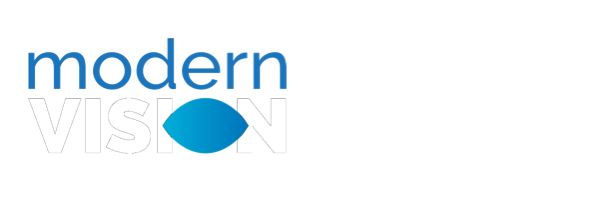What is a Refractive Error?
Published by on January 24, 2017
How to Understand Common Vision Conditions
At Kugler Vision in Omaha, NE, we understand that it can be difficult to know why and how our vision changes. We are here to help by answering your questions on common vision conditions. So, what does “refractive error” mean?
To understand refractive error, one must understand a little bit about how the eye works. Our eye is a tiny organ and is part of a complex visual system that translates light into images. Light enters our eye through the cornea and into the pupil. The pupil is the black hole in the middle of the iris, or colored part of the eye. Behind the iris is the natural lens, called the crystalline lens, which focuses the light onto the retina. The retina is the inside layer at the back of the eye and contains cells that are sensitive to light.
All this happens continuously and instantly to give us clear vision from near to far distances. However, eyes don’t always work perfectly. Their exact size and shape affect how well the eye focuses the light onto the retina. This causes imperfect, blurred vision. This vision impairment is what your doctor is referring to when he or she says you have a refractive error.
Examples of types of refractive error are:
- Myopia
- Hyperopia
- Astigmatism
- Dysfunctional Lens Syndrome (DLS) Stages 1
Common Refractive Eye Errors
Myopia (Nearsightedness)
If you have Myopia, also called Nearsightedness, near objects are clear but objects at a distance are blurry. It is difficult for you to focus on an object or details far away or across the room. Myopia occurs when the cornea, the front surface of the eye, is too steep, or the eyeball is too long. This causes light to be focused in front of the retina instead of on it, creating that blurry distance vision.
Hyperopia (Farsightedness)
If you have Hyperopia, also known as farsightedness, objects at a distance are clear but objects up close are blurry. Hyperopia occurs when the cornea is too flat or the eye is too short. Hyperopia is caused by an irregularly-shaped eye that prevents light from properly lining up on the retina and is not necessarily an age-related condition. This differs from Presbyopia, which is detailed below as a symptom of DLS stage 1, which presents itself sometime after age 40 for most people.
Astigmatism
If you have astigmatism, light comes into your eye and is focused inconsistently. All the objects you see are stretched or distorted. Astigmatism can vary in severity. Astigmatism occurs when the cornea has an irregular oval shape, similar to the shape of a football. This can occur simultaneously with nearsightedness or farsightedness. Vision correction, like LASIK can correct astigmatism.
Dysfunctional Lens Syndrome (DLS) Stage 1 – Presbyopia
DLS Stage 1, or Presbyopia, is the clinical term for the near vision loss that affects people in their 40s and 50s. Over time, the eye’s natural lens becomes too stiff to effectively focus up close. If you are experiencing DLS Stage 1, you have most likely noticed a gradually increasing need for reading glasses or bifocals to read print and to see other near objects clearly.
Refractive Error Solutions: Common Vision Correction Surgeries
Ready to see clearly again? If you are experiencing blurry vision and are in glasses, contacts, readers or bifocals because you have a common refractive error, you can have clear vision again! Achieve your vision goals with Kugler Vision. We can help you live life to the fullest through clear vision. Free yourself from the barriers of glasses and contacts bring by choosing vision correction.
Laser Vision Correction, like the LASIK or ASA procedures, are a couple of solutions that could be right for you! The candidates for laser vision correction are people who have Myopia, Hyperopia, and/or astigmatism. Laser vision correction reshapes the front of the eye to change eye focusing power, resulting in clear vision. Laser vision correction is a permanent solution that helps individuals see more naturally and frees them from the daily hassles of glasses and contacts, so they can enjoy life to the fullest.
Corneal Inlay Procedure is an eye procedure that restores near vision by implanting a small inlay that changes the way the eye focuses light. Implantation of a corneal inlay can free individuals from the constant frustrations of reading glasses. Candidates for a corneal inlay procedure include people who have DLS Stage 1. The corneal inlay is placed in only one eye, allowing individuals to see up close, while maintaining distance vision in both eyes.
Refractive Lens Exchange (RLE) is a procedure that replaces the dysfunctional lenses with a technologically advanced lens. With one simple procedure the glasses prescription is corrected, it improves the yellowing, distorted lens, and prevents any future development of cataracts. The candidates for RLE are those who have astigmatism, myopia, hyperopia, and/or presbyopia.
Take the Next Step
At Kugler Vision in Omaha, NE we offer a full range of visual solutions. At any stage of life, no matter what the refractive error, we will analyze your eyes and recommend the best procedure for you based on your unique eyes. Approximately 90% of people who wear glasses or contacts are eligible to have their vision corrected with one of the available procedures. Refractive surgery is a life-changing, transformational experience. Find out today how you can free yourself from the hassles of glasses and contacts. Call us at 402.558.2211 for answers to any questions you may have or to schedule a consultation with us.

Lance Kugler, MD, is a specialist in LASIK and vision correction surgery and CEO of Kugler Vision. A proud Omaha native, he is passionate about improving lives through clear vision. Dr. Kugler serves on several national boards, and his practice is recognized internationally as a center of excellence. Dr. Kugler is one of the original founders of the Refractive Surgery Alliance, an international organization comprised of over 350 of the world’s leading vision correction surgeons; he also served as its first president. In 2019, Dr. Kugler was selected as a TEDx speaker, and delivered a talk in Omaha about the worldwide epidemic of nearsightedness and refractive solutions. Dr. Kugler is an Associate Professor of Refractive Surgery at the University of Nebraska Medical Center’s Truhlsen Eye Institute, has been published in many medical journals, and participates in numerous clinical studies to advance the field of vision correction surgery. Additionally, Dr. Kugler is proud to be a Board Certified Fellow of the World College of Refractive Surgery & Visual Sciences. Dr. Kugler and his wife are proud parents to five active kids. When he has a spare moment, he enjoys skiing, tennis, travel, and fine coffee.




Leave a Reply